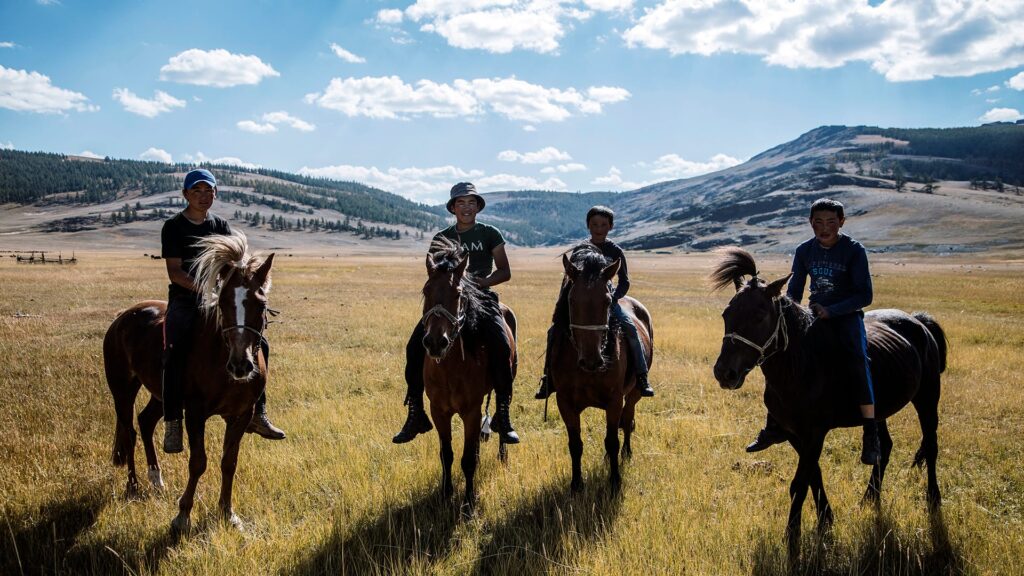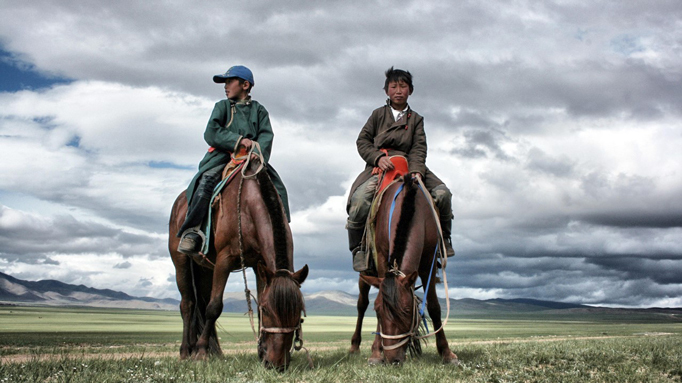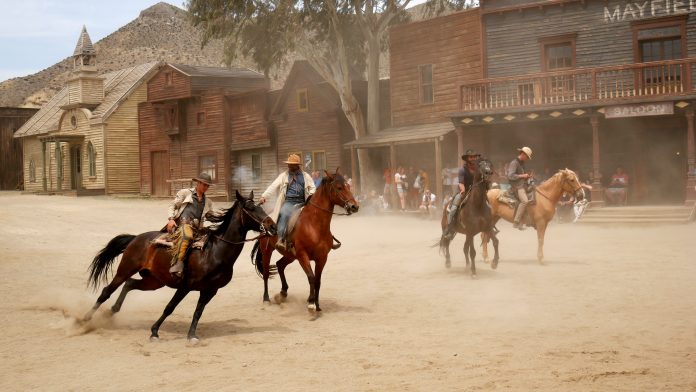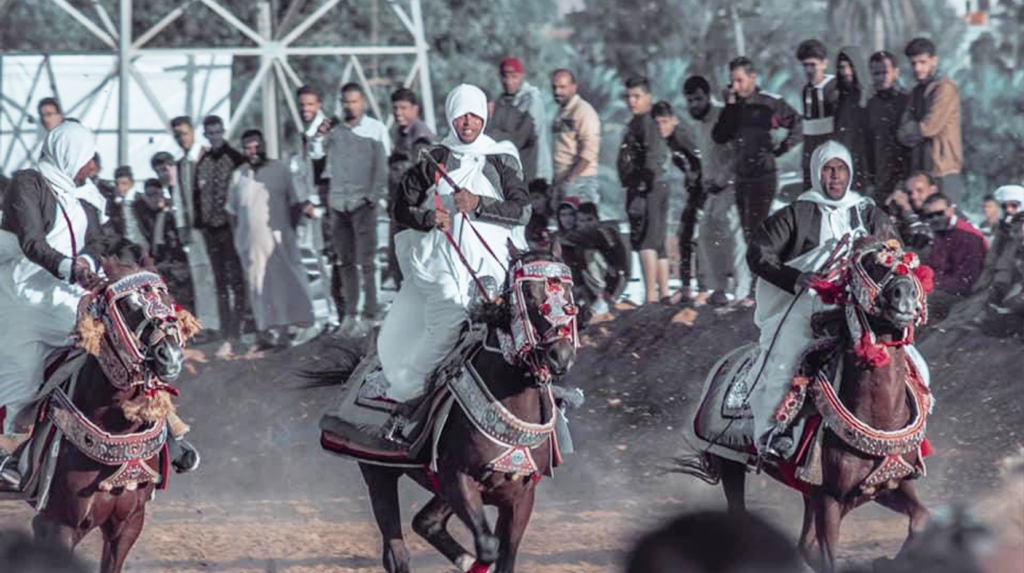Have you ever wondered about the influence of horseback riding on cultural traditions? It’s fascinating to think about how a simple activity like riding a horse can have such a profound impact on a society’s customs and way of life. In this article, we’ll delve into the topic of horseback riding and explore how it has shaped and influenced various cultural traditions throughout history. You’ll learn about the role of horses in warfare, transportation, and even sport. So, if you’re curious to know more about the connection between horseback riding and cultural traditions, keep reading!
Horseback riding has a rich history that spans across different cultures and time periods. From the nomadic tribes of Mongolia to the knights of medieval Europe, horses have been integral to the development and survival of civilizations. The bond between humans and horses has shaped the way people live, work, and play. So, whether you’re interested in the role of horses in ancient warfare or the impact of horse racing on society, this article will provide you with a deeper understanding of the influence of horseback riding on cultural traditions. Stay tuned for more interesting insights!
Horseback Riding and its Influence on Cultural Traditions
Horseback riding is an exhilarating sport and recreational activity that has deep cultural significance in various societies around the world. From its basics to its influence on art, literature, fashion, and even military tradition, horseback riding has left a lasting impact on cultural traditions.

The Basics of Horseback Riding
Before we delve into the cultural significance of horseback riding, it is important to understand its fundamentals. Riding a horse requires balance, coordination, and effective communication with the horse. Riders sit on the horse’s back, using reins and leg aids to control the horse’s movements. It is not only an exciting recreational activity but also a mode of transportation and a form of therapy.
History of Horseback Riding
The history of horseback riding dates back thousands of years. The domestication of horses revolutionized transportation and warfare, enabling societies to expand and develop more rapidly. Nomadic cultures relied heavily on horses for transportation and hunting. As civilizations advanced, horseback riding became intertwined with the aristocracy, with knights and cavalry units playing a crucial role in battles and wars.

Types of Horseback Riding
Horseback riding takes many different forms, each with its own distinct techniques and traditions. Let’s explore some of the most prominent styles of horseback riding:
Western Riding Style
Originating from the cowboys of the American West, Western riding emphasizes a relaxed and comfortable seat. It is commonly seen in rodeos and ranching activities. Western saddles and techniques are designed to provide stability and support during long hours spent herding cattle.
English Riding Style
Popularized in Europe, English riding is characterized by a more upright posture and a lighter contact with the horse’s mouth. It is commonly seen in disciplines such as dressage, show jumping, and eventing. English riding places significant emphasis on precision and finesse.
Trail Riding
Trail riding involves exploring natural landscapes on horseback. It gives riders the opportunity to connect with nature and enjoy the serene atmosphere of forests, mountains, and meadows. Many countries offer designated trails and parks for this purpose, attracting tourists and locals alike.
Rodeo and Bull Riding
Rodeo is a competitive sport that originated in the United States and showcases various skills associated with cowboy culture. Bull riding, in particular, captivates audiences with its thrilling and dangerous nature, as riders attempt to stay atop a bucking bull for as long as possible.
Cossack Riding
Cossack riding showcases the traditional horsemanship of the Cossack people, who are known for their remarkable riding skills and daring stunts. Cossack horsemen perform acrobatic tricks such as standing on their horses’ backs or hanging off the sides while riding at high speeds.
Endurance Riding
Endurance riding tests the stamina and resilience of both horse and rider. Competitors cover long distances, often over challenging terrain, within a specific time frame. This form of riding promotes the welfare of the horse, focusing on their overall health and fitness.
Cultural Significance of Horseback Riding
Horseback riding holds great cultural significance in many societies, as it has been an integral part of traditional cultures, ceremonies, and rituals. Additionally, horses themselves hold symbolic meanings in different cultures, further adding to the cultural importance of horseback riding.
Horseback Riding in Traditional Cultures
In many indigenous cultures, horseback riding is deeply embedded in traditions and daily life. Native American tribes, such as the Sioux and the Comanche, relied on horses for hunting, transportation, and warfare. The bond between the horse and the rider was highly revered and celebrated.
Horseback Riding Ceremonies and Rituals
Throughout history, horseback riding has played a central role in various ceremonies and rituals. For example, the Spanish Riding School in Vienna, Austria, showcases the art and elegance of classical dressage in ceremonial performances. Traditional horseback parades, like the Royal Windsor Horse Show, highlight the grandeur of horseback riding in a ceremonial context.
Symbolism of Horses in Different Cultures
Horses have symbolized different attributes and qualities in various cultural traditions. In Celtic mythology, horses represented power, freedom, and the connection between the physical and spiritual realms. In Norse mythology, Sleipnir, an eight-legged horse, was a symbol of speed and strength. Horses have also been associated with loyalty, bravery, and nobility in many cultures.

Horseback Riding and Folklore
Horseback riding has a rich presence in folklore, myths, and legends, further cementing its cultural significance. These stories often reflect the values, beliefs, and aspirations of different societies.
Myths and Legends Associated with Horseback Riding
In Greek mythology, the centaurs, beings with the upper bodies of humans and the lower bodies of horses, were known for their wild and untamed nature. The legend of Pegasus, the winged horse, has captivated imaginations for centuries. These myths highlight the bond between humans and horses and the mythical qualities attributed to them.
Horses in Fairy Tales and Folk Stories
Horses frequently appear in fairy tales and folk stories, often as loyal companions or magical creatures. From Cinderella’s pumpkin-turned-carriage to the talking horses in “The Golden Apple” from Arabian Nights, horses add enchantment and adventure to these beloved tales.
Horseback Riding in Folklore Traditions
Various folklore traditions incorporate horseback riding into their rituals and celebrations. The Mari Lwyd tradition in Wales involves a horse’s skull draped with a white sheet, paraded from house to house during the winter season. The Hobby Horse, a character in English Morris dancing, is believed to bring good luck and fertility during May Day celebrations.
Horseback Riding Styles Around the World
Different regions have developed their own unique riding styles, reflecting the cultural and environmental influences of each area.
Western Riding Style
Among the cowboy culture of North America, Western riding style emerged. Riders would navigate vast landscapes while herding cattle, showcasing a relaxed seat and specialized equipment such as the Western saddle and bridle.
English Riding Style
Originating primarily in Europe, English riding style emphasizes a more upright position, with riders using subtle aids to communicate with the horse. This style has become popular in disciplines such as dressage, show jumping, and eventing.
Trail Riding
Trail riding allows riders to explore diverse landscapes while enjoying the beauty of nature. This style is popular in many countries, with designated trails and parks catering to both experienced riders and beginners.
Rodeo and Bull Riding
Rodeos and bull riding originated in North America and are deeply rooted in cowboy culture. These styles showcase the skill and daring of riders as they attempt to stay atop a bucking bull for as long as possible.
Cossack Riding
Cossack riding originates from the Cossack people, who are known for their exceptional horsemanship. This style emphasizes agility, speed, and daring stunts performed at high speeds, often while standing on the horse’s back or hanging off the sides.
Endurance Riding
Endurance riding tests both horse and rider in long-distance races, often spanning hundreds of kilometers. The focus is on the well-being and fitness of the horse, as they are monitored and cared for throughout the event.

Famous Horseback Riding Events
Several prestigious horseback riding events draw worldwide attention and attract participants and spectators from various corners of the globe. These events showcase the skill, beauty, and competitive spirit of horseback riding.
The Kentucky Derby
The Kentucky Derby, often referred to as “The Run for the Roses,” is a legendary horse race held annually at Churchill Downs in Louisville, Kentucky. It is the first leg of the American Triple Crown and captures the attention of racing enthusiasts, fashionistas, and celebrities alike.
The Royal Ascot
The Royal Ascot is one of the most prestigious horse racing events in the world, held annually in Berkshire, England. Apart from the thrilling races, it is renowned for its strict dress code and the presence of British royalty, making it a truly regal affair.
Polo Tournaments
Polo tournaments, such as the Gold Cup in Argentina and the British Open in England, showcase the elegance and athleticism of this fast-paced sport. These events attract players and spectators from around the world, contributing to the global popularity of polo.
Rodeo Championships
Rodeo championships, including the National Finals Rodeo in the United States and the Calgary Stampede in Canada, are legendary events that bring together the best rodeo performers in various disciplines. These events celebrate cowboy culture and showcase rodeo skills at their finest.
Horseback Riding and Military Tradition
Horseback riding has a long-standing connection with military tradition, both in times of conflict and in peaceful activities such as mounted police forces.
Cavalry Units throughout History
Cavalry units have played a significant role in warfare throughout history. From the ancient Roman cavalry known as “equites” to the European knights of the Middle Ages, these mounted warriors provided speed, mobility, and firepower on the battlefield.
Mounted Police Forces
Mounted police forces are still active in many cities around the world. These highly trained officers and their horses patrol city streets, help control crowds, and maintain law and order. Mounted police units symbolize tradition, honor, and the bond between horses and humans.
War Horses
War horses have been a vital asset in military campaigns throughout history. They carried armored knights into battle and provided transportation and logistical support. The bravery and strength of war horses have been celebrated in countless tales of heroism.

Horseback Riding in Art and Literature
Horseback riding has served as a muse for artists and writers, finding its way into various forms of expression throughout centuries.
Equestrian Portraits
Equestrian portraits have been a popular subject in art, capturing the power, beauty, and prestige associated with horseback riding. From traditional oil paintings to modern photography, these portraits immortalize both the riders and their loyal companions.
Horses in Paintings and Sculptures
Horses have been prominent figures in numerous paintings and sculptures, symbolizing various concepts such as freedom, strength, and nobility. Artists like Leonardo da Vinci, Eugene Delacroix, and Frederic Remington have left enduring legacies with their masterful portrayals of horses.
Horseback Riding in Literature
Horseback riding often features prominently in literature, adding depth and excitement to stories. From the iconic horse-riding scenes in J.R.R. Tolkien’s “The Lord of the Rings” to the equestrian adventures in the novels of Zane Grey, horses and horseback riding have captured the imaginations of readers worldwide.
Influence of Horseback Riding on Fashion
Horseback riding has not only influenced cultural traditions but has also made a significant impact on the world of fashion. Equestrian style has transcended the borders of the riding arena and has become a fashion trend in its own right.
Equestrian Fashion Trends
Equestrian fashion is characterized by sophisticated and timeless designs inspired by riding attire. Pieces such as tailored jackets, fitted breeches, knee-high riding boots, and elegant helmets have become stylish staples in many wardrobes.
Tack and Equipment in Fashion
The equestrian lifestyle has influenced fashion accessories and ornamental details. Elements such as stirrup-shaped buckles, braided leather, and horsebit motifs can be found in purses, belts, and jewelry. These fashion trends pay homage to the elegance and functionality of traditional riding equipment.
Health Benefits of Horseback Riding
Aside from its cultural and stylistic influence, horseback riding offers numerous health benefits to riders, both physically and mentally.
Physical Fitness and Horseback Riding
Riding a horse requires muscular strength, coordination, and balance. Engaging in regular riding sessions can improve core strength, cardiovascular health, and overall fitness. Riders also develop better posture and flexibility through the nuances of controlling a horse’s movements.
Mental Well-being and Horseback Riding
Horseback riding is known to have a positive impact on mental well-being. The interaction with horses and the serene surroundings of nature can reduce stress, improve focus, and provide emotional support. Many individuals find solace and relaxation in the rhythmic motion of riding.
Therapeutic Riding
Therapeutic riding, also known as equine-assisted therapy, utilizes horseback riding to improve physical, cognitive, and emotional well-being. This form of therapy has been beneficial for individuals with disabilities, mental health conditions, and post-traumatic stress disorder, promoting healing and personal growth.
Conservation and Protection of Horseback Riding Areas
Preserving and protecting natural habitats and designated horseback riding areas is essential for the continued enjoyment of this activity and the well-being of the horses involved.
Preservation of Natural Habitats
Preserving natural habitats ensures the availability of diverse landscapes suitable for trail riding and other equestrian activities. Conservation efforts contribute to the protection of wildlife, plant species, and the overall health of ecosystems.
Trail Maintenance and Safety
Maintaining trails in good condition and ensuring safety measures for riders and horses are crucial. Regular inspection and maintenance of trails, as well as implementing guidelines for riders, help ensure an enjoyable and safe riding experience.
Environmental Impact of Horseback Riding
Horseback riding can have an impact on the environment, particularly in terms of soil erosion and vegetation damage. Implementing responsible riding practices, such as staying on designated trails and properly disposing of waste, minimizes the ecological footprint of this activity.
Horseback Riding Tourism
The allure of horseback riding has made it a popular choice for tourists seeking unique and memorable experiences. Many destinations offer diverse equestrian opportunities, catering to riders of all levels of experience.
Popular Horseback Riding Destinations
Countries like Argentina, Mongolia, Iceland, and Kenya have become popular destinations for horseback riding enthusiasts. These regions provide stunning landscapes, opportunities for wildlife encounters, and a chance to experience local cultures through horseback riding adventures.
Equestrian Tours and Vacations
Equestrian tours and vacations offer riders the chance to explore different regions on horseback while immersing themselves in local customs and traditions. Riders can embark on multi-day trail rides, visit historical sites, and enjoy authentic cuisine, creating unforgettable memories.
Horseback Riding Resorts and Retreats
Horseback riding resorts and retreats provide a combination of luxurious accommodations and top-notch equestrian facilities. These establishments cater to riders seeking a relaxing and indulgent experience, often offering specialized programs and clinics led by experienced instructors.
Horseback Riding as a Sport
Horseback riding has evolved into a competitive sport, attracting skilled riders from around the world and captivating audiences with thrilling displays of athleticism and horsemanship.
Competitive Horseback Riding
Competitive riding encompasses various disciplines, including dressage, show jumping, eventing, and reining. Riders and their horses undergo rigorous training and participate in competitions at local, national, and international levels.
Olympic Equestrian Events
Equestrian events have been a part of the Olympic Games since the early 20th century. Dressage, show jumping, and eventing demonstrate the harmony and skill between rider and horse, showcasing the highest levels of equestrian athleticism.
Polo and Show Jumping
Polo and show jumping are two disciplines that have gained global recognition for their heart-pounding action and competitive nature. Polo involves two teams on horseback, while show jumping tests the skill and precision of horse and rider as they navigate a series of obstacles.
Training and Care for Riding Horses
Proper training and care are essential for maintaining the health and well-being of riding horses. Experienced equestrians understand the importance of establishing a strong bond and maintaining a balanced lifestyle for their equine partners.
Basic Horse Training Techniques
Training riding horses involves establishing a foundation of trust, respect, and communication. Techniques such as lunging, desensitization, and ground work help develop a horse’s responsiveness to commands and cues, ensuring a safe and enjoyable riding experience.
Horse Health and Wellness
Maintaining the health and wellness of riding horses involves proper nutrition, routine veterinary care, and regular exercise. Grooming, hoof care, and dental checks are also crucial for the overall well-being of the horse.
Equine Nutrition and Exercise
Balanced nutrition is vital for the performance and longevity of riding horses. Providing a diet appropriate for their age, breed, and activity level ensures they have the energy and nutrients required. Regular exercise, such as riding and turnout, helps horses stay fit and mentally stimulated.
Conclusion
Horseback riding holds a special place in the hearts and cultures of people around the world. With its rich history, diverse riding styles, and influence on art, literature, fashion, and even military tradition, horseback riding has left an indelible mark on cultural traditions. From the thrill of competitive events and the tranquility of trail rides to the undeniable bond between rider and horse, horseback riding continues to captivate and inspire people worldwide. Whether you are an experienced rider or a novice eager to explore the equestrian world, horseback riding offers a magical journey that intertwines tradition, nature, and the human spirit. So saddle up, embrace this timeless adventure, and let the spirit of horseback riding guide you on an unforgettable journey.